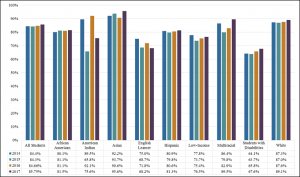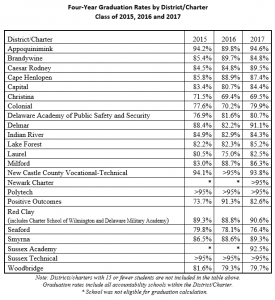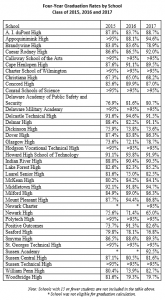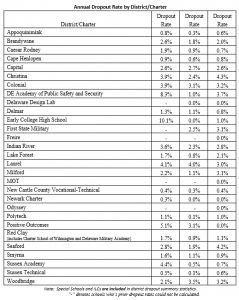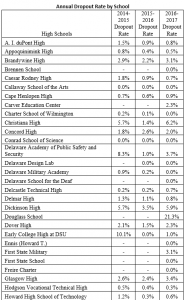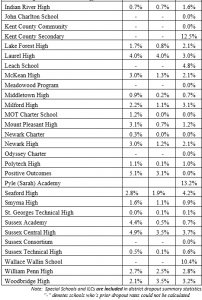African American students, Hispanic students, and students with disabilities recorded the highest graduation rates on record
WILMINGTON, Del. – Delaware high school students are graduating at their highest levels in at least a decade, according to the 2019 graduation data released on Wednesday by Governor John Carney and Dr. Susan Bunting, Secretary of the Delaware Department of Education.
The statewide graduation rate for the Class of 2019 was 88.27 percent, an increase from the Class of 2018, which had a graduation rate of 86.69 percent. Class of 2020 data will not be available until 2021.
African American students, Hispanic students, and students with disabilities also recorded the highest graduation rates since the State of Delaware began tracking additional data in 2010, according to the results released on Wednesday.
Click here for the latest graduation data from the Delaware Department of Education.
“More Delaware students are graduating high school ready for college or a career,” said Governor Carney. “That has been a focus of Secretary Bunting and her team at the Department of Education since we took office in 2017 – and it’s great news for the future of our state. The data we’re releasing today shows that Delaware’s progress is broad, and that Delaware’s educators are committed to helping all of their students succeed. That work continues. We will remain committed to supporting our educators and students, and continuing to invest in public education. Nothing is more important to the long-term success of our state.”
Due to COVID-19 school building closures, data collection for the state’s dropout rate typically released with the graduation rate data has been delayed. That report will be released in the fall.
“This data is important because it is more than a set of numbers in a report. It confirms that more Delaware high school students are leaving high school with a diploma, an important milestone in furthering their education and career. I congratulate the educators, families and students whose hard work has led to this progress,” said Secretary Bunting. “However, we still have work to do. Our subgroup data shows that some student groups are not graduating at the same rate as their peers. We must provide additional targeted supports to ensure every child is leaving high school with the diploma that will open the door to future success.”
This year’s rate is the highest since the state changed how it calculates graduation rates in 2010-11.
The Class of 2019 graduation rate was 85.02 percent for Hispanic students, 86.37 percent for African American students and 90.7 percent for white students.
The Class of 2019 four-year graduation rate was 71.59 percent for students with disabilities and 75.25 percent for English learner students.
By county, New Castle had the highest graduation rate at 90.5 percent followed by Kent at 87.38 percent and Sussex at 87.06 percent.
Find more subgroup data as well as graduation rates by high school in the full report from the Delaware Department of Education.
###
